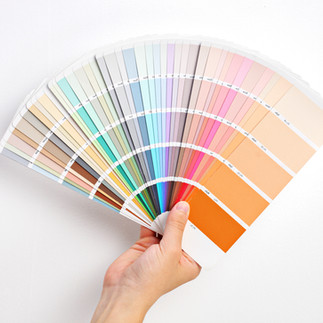Colors' Effect on People
- Gabriella Gordon

- Oct 2, 2023
- 2 min read
This week, I had the privilege of receiving a Color Me Beautiful consultation by a dear family friend. It reminded me about how much of an influence, color choices can have on an individual.

A picture of a model was shown at my consultation and it emphasized how certain colors can make a person appear more awake or more tired. I really enjoyed the entire process of finding which colors worked best for my features. She even went over how to do makeup to accentuate my eyes. I totally recommend this consultation! As a wanna-be minimalist, I have opted for more neutral wardrobe with blacks, whites, and beige pieces. Having this opportunity to meet with a consultant has inspired me to move out of my comfort zone and wear more colors which can lift my spirits and confidence!
The technical term for the process I underwent is called, Color Psychology which is the study of how colors affect human behavior. While this term may be new, the knowledge of this color theory is not. For example, purple is known to be a color of royalty, worn by kings and queen for centuries. Black is seen as a solemn and cold color and worn at funerals.
In the same way, choosing the right colors for a client is a very important job as an interior designer as it can have a direct impact on an individual's quality of life. Color is an important communication tool. Whether it be how someone dresses themselves or designs a space, the colors you choose tell a story. There are three main elements of Color Psychology to keep in mind when choosing colors for a space:
Purpose: Will this space be a place to relax and sleep? Or a place of productivity? It is important to identify this when designing a space. For example, blue would be an ideal color for an office as it enhances productivity. It would not be ideal for a bedroom, certain hues of blue may be acceptable for a bedroom such as teal, which evokes optimism.
Lighting: Certain colors reflect light, it is important to consider what kind of lighting will be in a space. Light bounces off walls and can have an effect on color. Natural lighting verses artificial lighting for example.
Hue: You don't want the color to be too distracting from the primary purpose of the space. While the primary colors may have general purposes, different hues can have different effects on a space.
There are many different meanings believed to be for each color, whether symbolic, psychological, or emotional. In conclusion, I have been convinced to add more color with purpose, using color psychology when designing a space.
If you would like to read more about color psychology I will link some articles down below!









Comments